Do you know you can enable Spatial Sound Windows 11 and get a better audio experience with more immersive Sound? Yes! You read it right.
Whenever you turn on Spatial Sound on your device, you will feel like an audio is coming from around you. Not from the front or the back!
In short, enabling Spatial Sound in Windows 11 can make your movie-watching experience immersive and engaging. Besides, it can also help you improve your gaming skills by giving you the feeling of sound direction.
However, now, one question will pop into your mind – how to enable it?
Don’t worry! We have discussed a step-by-step procedure of how to do it.
Please read it thoroughly, enable Spatial Sound, and immerse yourself in the impressive audio experience.
Also read: Explained: What Is Dolby Audio Technology In Smart TV?
What is Spatial Sound?
Spatial Sound is a Windows 11 feature that offers a 3D audio experience. This feature uses head tracking to perfectly position the sound around you, creating the perfect sensation that instigates from several directions.
In short, this feature can improve your enjoyment and engagement while playing games, listening to music, or watching movies.
Which Spatial Sound Formats Are Supported By Windows 11?
Generally, Windows 11 supports two formats of Spatial Sound: free and premium. Let’s check them out in detail.
Windows Sonic for Headphones
This format is entirely free and in-built into Windows 11. So, it can work perfectly with any headphone. The format uses head tracking to create an immersive audio experience, making it feel like the sound is coming from all around you. So, if you are a gamer, movie watcher, or anyone else wanting to improve your audio experience, this format is the perfect choice.
Also read: Explained: Apple Airpods All You Need To Know
Dolby Atoms for Headphones
If you are looking for the premium format, then Dolby Atoms for Headphones is the one on which you can reply. It offers a much higher immersion level than Windows Sonic for Headphones. It works differently than the Windows Sonic. In Dolby Atoms, object-based audio is being used. Therefore, it places the sound ideally in space, no matter how you move your head.
Remember, this format requires a Dolby Atoms-enabled soundbar or headset. However, it can improve your audio experience for gamers, movie watchers, and music listeners who require the best audio experience.
DTS Headphone: X
It is another excellent premium spatial sound format similar to Dolby Atoms for Headphones. It uses object-based audio to deliver a more immersive audio experience compared to traditional stereo sound. However, the DTS Headphone:X also need a DTS Headphone: X-enabled soundbar or headset. But trust us, it can be an outstanding choice for you if you are a gamer, movie watcher, or someone looking for the best possible audio experience.
Also read: Windows 11 Tips And Tricks That You Should Not Miss
Besides these three formats, Windows 11 also supports other Spatial Sound formats like Auro-3D and DTS: X. However, these formats are not very popular and available, just like Windows Sonic for Headphones, DTS Headphone: X, and Dolby Atoms for Headphones.
Ways to Enable Spatial Sound in Windows 11
You can enable Spatial Sound Windows 11 using these three methods.
1.Windows Settings
If you want to enable Spatial Sound in Windows 11, follow the steps below.
- First, press the Windows + I key and open the Windows Settings. You can go to the Start menu, use the shortcut next to the power menu, or Windows Search.
- After that, you can go to System -> Sound
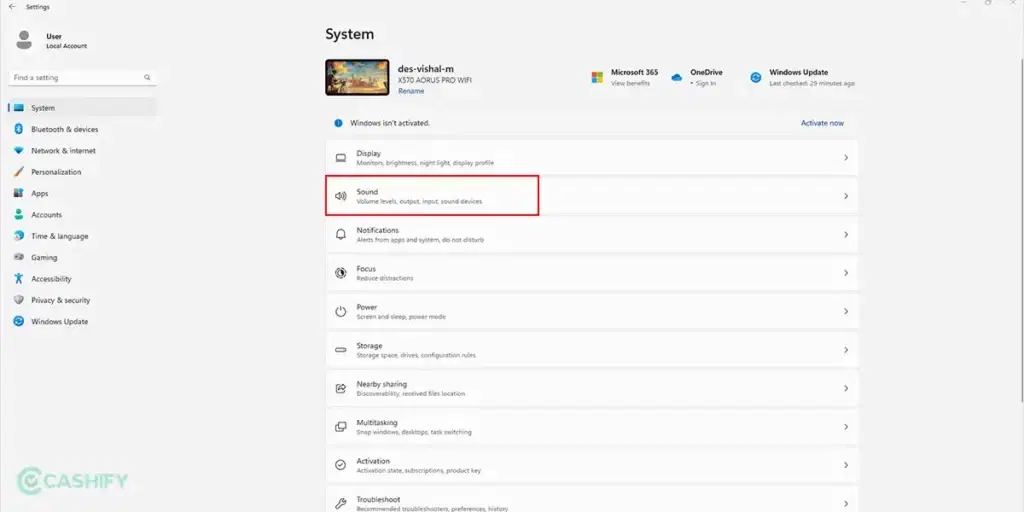
- Now, select the output device (speaker).
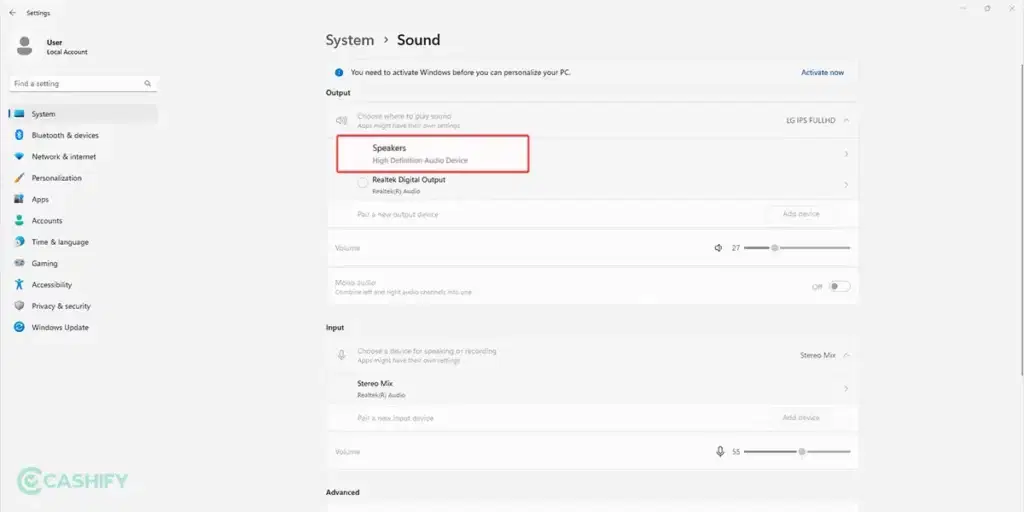
- Scroll down a bit, and you will see the Spatial Audio section.
- Here, you will see the option “Windows Sonic For Headphone.” Choose that option.
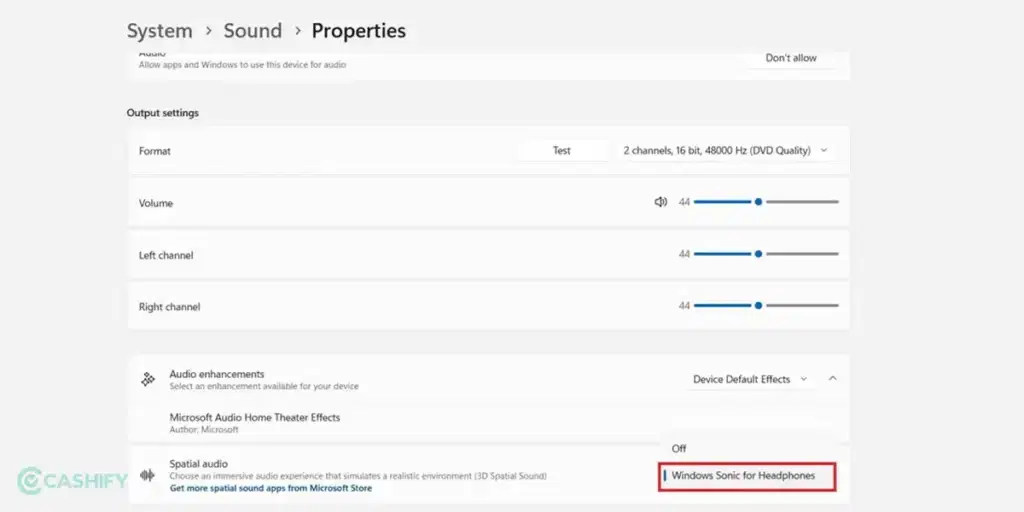
- That’s it. Spatial Sound is now enabled on your device. You can even do other sound settings, such as adjust the sound volume and balance it through this menu. However, you must install specific Spatial Sound apps that you can quickly get from the Microsoft Store.
Also read: How To Upgrade To Windows 11 For Free!
2.Control Panel
If you want to enable the Spatial Sound using the control panel, follow the steps below.
- Open the Control Panel using the Windows + R key. You will see a dialogue box. Here, type control and click on OK.
- Now, select Hardware and Sound -> Sound.
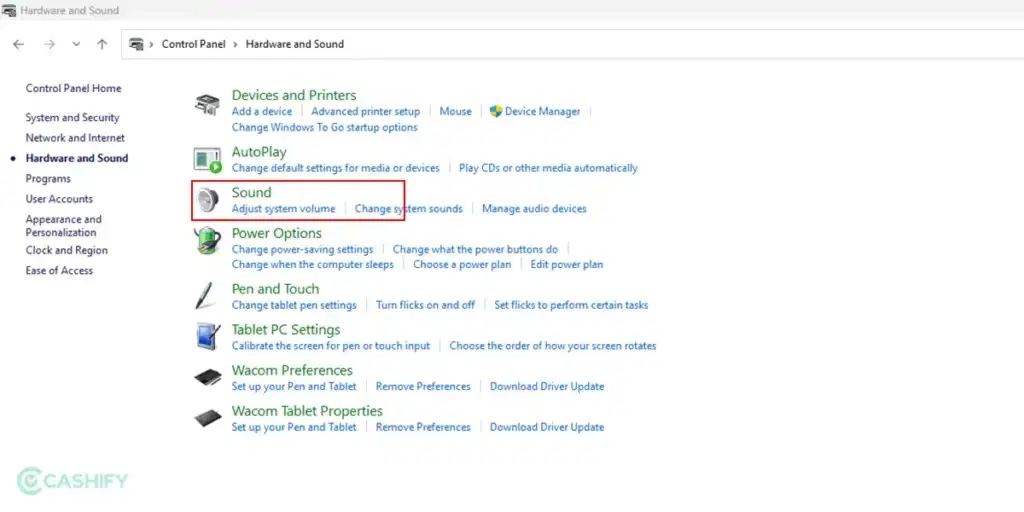
- Choose the Playbacktab and search for the sound output device. Right-click on it -> choose Properties.
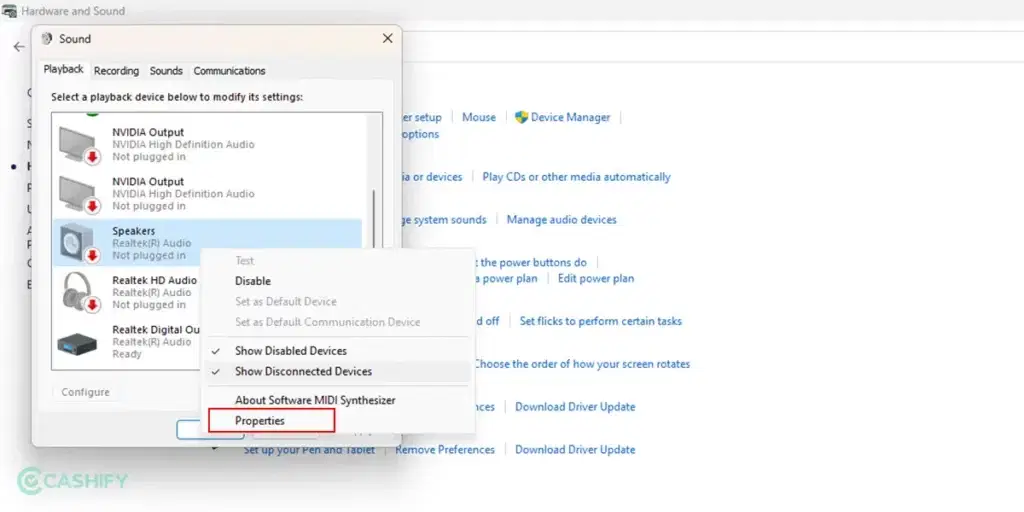
- In the next step, go to the Spatial Sound tab and under the Spatial Sound Format -> click on the dropdown menu -> Choose Windows Sonic for Headphones.
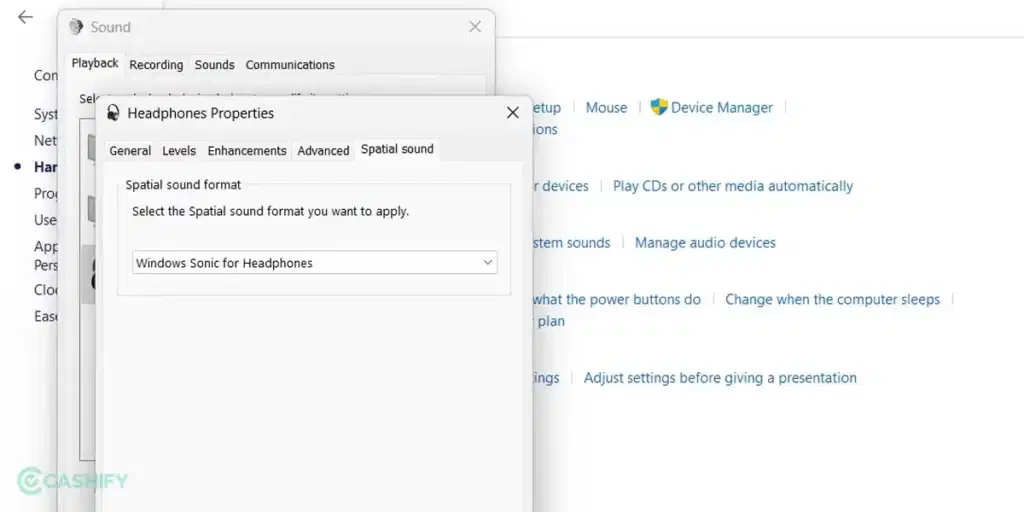
- Now, click on Apply, and you are good to go.
Also read: How To Give Windows 10 A Makeover To Look Like Windows 11
3.Volume Mixer
- Do you want more control over Spatial Sound settings and individual application volumes? If yes, for that, you can use the Volume Mixer. Follow the below-discussed steps.
- Press the Windows + E key. It will open the File Explorer.
- Type sndvol.exe in the address bar, then click Enter to open the Volume Mixer window.
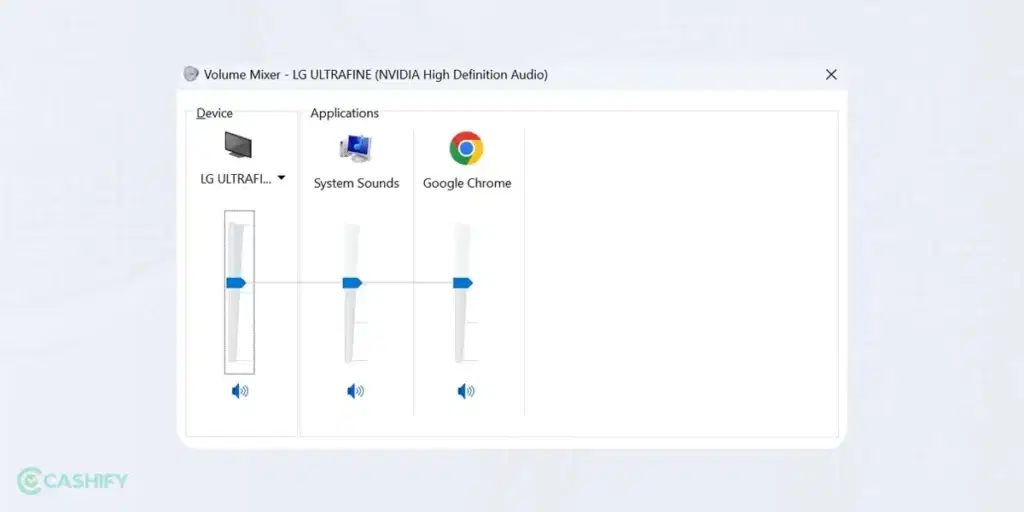
- Here, you will see the volume settings for your device and application. Tap on the speaker icon that you can see for your device. It will open the Speaker Properties.
- In this window, go to the Spatial Sound tab. Here, click on the dropdown menu and select Spatial Sound format.
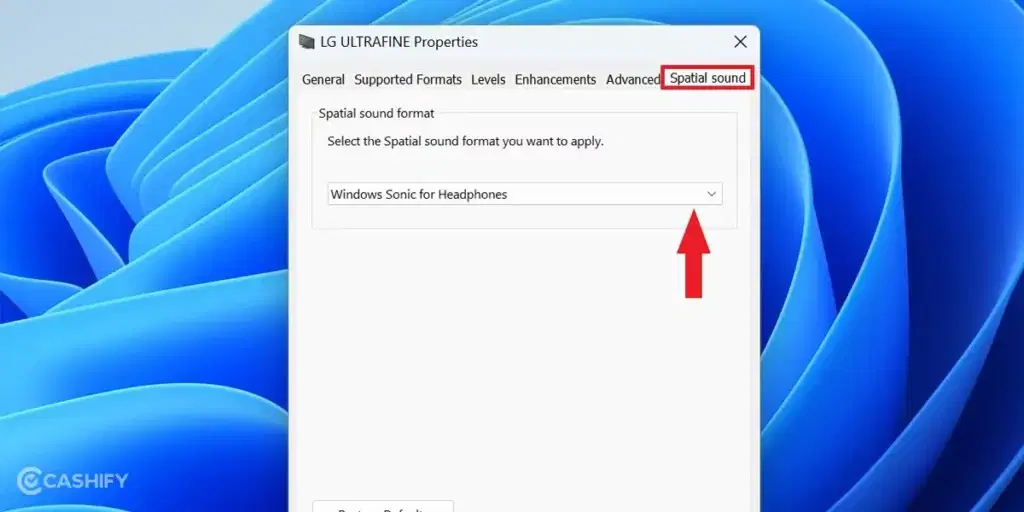
- Now, click the Apply and OK buttons to save the changes.
Here is how you can set the Spatial Sound for your device using the Volume Mixer.
Also read: How To Use Android Apps On Windows 11: Step-By-Step Guide
Let’s Optimise Your Audio Experience By Enabling Spatial Sound Windows 11
In summary, Spatial Sound Windows 11 makes the listening experience more compelling by offering a 3D sound effect. This 3D sound effect makes it easy to find where the Sound is coming from. Therefore, it makes gaming or entertainment more mesmerising.
And, do you know what is the good thing? Your Windows PC already has a spatial sound effect. Therefore, there is no need to buy any extra equipment for it. Just turn on the Spatial Sound toggle on your device and enjoy an elevated audio experience.
Also read: New Windows Media Player For Windows 11: A Complete Guide
If your phone’s screen is broken or the speaker is not working, opt for Cashify’s mobile repair services. They offer this service at an affordable rate.












































